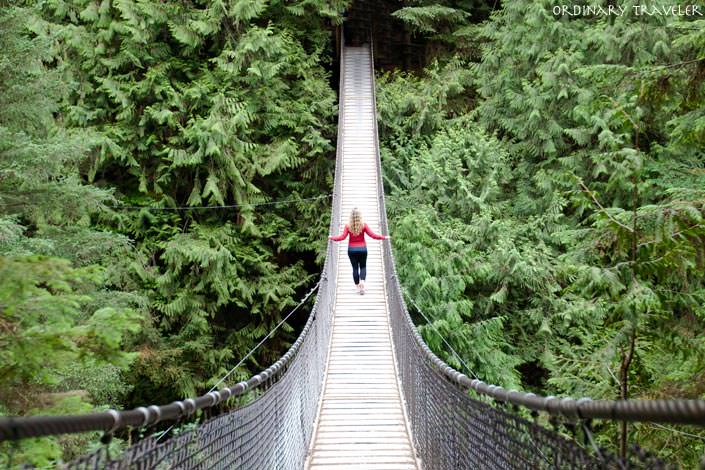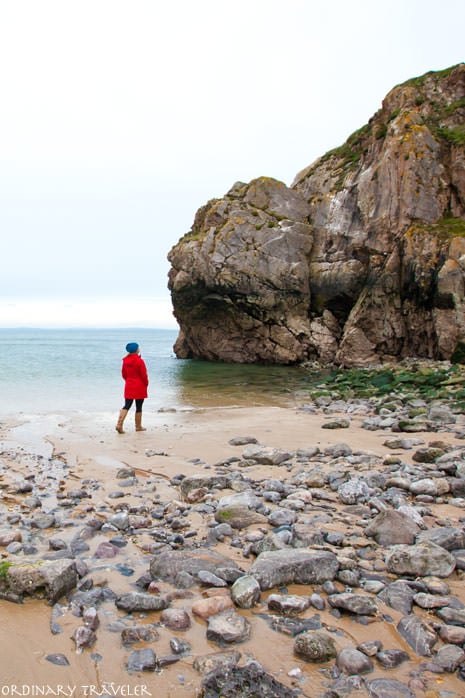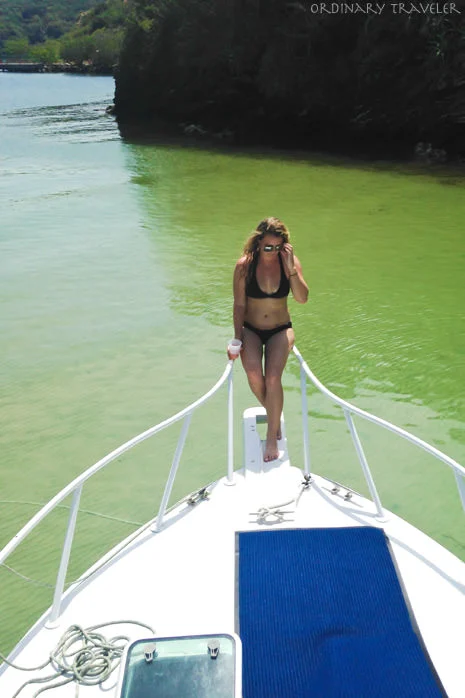How To Take Amazing Travel Photos As A Solo Traveler

Set Up A Tripod
Bringing a tripod is a tip for amazing photos even if you’re not traveling solo, but if you want steady photos, they’re a must. Tripods will help you avoid the blur and warp of out of focus or unsteady shots.
For smaller cameras, the Gorillapod line and similar flexible tripod products are great for keeping your camera steady even on the most unstable of terrain. Their ability to wrap around poles, skis, railings, and other surfaces means that you have the freedom of setting up shots even in tight urban settings too.
I personally use the Manfrotto line of tripods for my Sony a7II camera and I’ve been able to set it up in some precarious places. I also carry a digital timer remote and set it up to take photos every second so I don’t have to constantly run back and forth just to get a couple of different angles.

Use A Selfie Stick
Yes, using one may look silly, but selfie sticks are still incredibly useful for taking pictures on your own! By extending the range between the camera and the subject (likely yourself) further than a natural human arm span, it allows the frame of the photo to be expanded. This way you’ll be able to fit more of the background into your photo and you won’t come home with a million unflattering close-up photos of yourself.
I personally love this selfie stick because it’s all-weather and it extends just like a tripod would.
Attach A GoPro
If you’re looking for the perfect action shot or want your video and photos to come from a first-hand perspective, then attaching a GoPro to your gear while you surf, ski, bike, or even bungee jump can be a great way to capture the experience.
Furthermore, the wide range of mounts available mean that you can capture images with the GoPro in environments where other cameras may fear to tread — like underwater or tumbling through the air. We use the Hero7 Black because it has a LCD screen to frame and view your shots.
Read more: The Best Compact Cameras (A Detailed Buying Guide)
Ask A Stranger
Whether you have specialized gear or not, there’s always the option to reach out for help from someone new. After all, you’re not traveling just to look at a foreign place or culture, you’re there to experience it, to take part in a different world or way of life. Photos can be a great way to capture memories from your trip, but starting an interaction with another person, even if it’s just asking for help with your camera, is a great way to make them.
You won’t always get the best photos with this option, but my trick is to ask someone who is carrying their own DSLR camera. I like to give people an idea of how I would like the shot framed before I hand over my camera as well.
Read more: Here’s How To Meet People On Your Next Solo Trip

Install Photo Editing Software Or Apps
Ok, so you’ve taken the perfect selfie: now what? What you do to the photo after you take it can be just as important to the character of the photo as how you set it up.
Most cell phones come with a built in image editor which allows you to do basic editing, such as slapping on a filter or cropping and rotating the image, but experimenting with other apps like ProCamera or Snapseed will give you further options such as color correction, noise reduction, and curve adjustment.
For photos not taken with your phone, I recommend Adobe Bridge and Photoshop for editing software. Plenty of photographers use Lightroom as well. It’s very similar to Adobe Bridge, but it’s a little easier to learn.
Consider Upgrading Your Gear
You’ve probably heard the old saying, “It’s not the camera, it’s the photographer who takes good pictures.” While I agree that you don’t need $10,000 dollars worth of photography gear to take a great photo, megapixels do count for something. I regularly take the exact some photo with my iPhone as I do with my Sony a7II Mirrorless and the photo from my camera always wins.
A nice camera with more megapixels means your photo won’t look grainy after editing, you can crop the image and still have a decent quality photo, and you have more options — like taking the photo in RAW instead of JPG and bumping up the ISO for night shots.
The Sony a7ii can be a little overkill for the everyday photographer, so I usually recommend that travelers start out with the Sony a7 Mirrorless or the Canon Powershot G9 Point and Shoot camera. For more information about some of the photography gear we use, visit our travel resources page or our travel photographer’s camera kit post.
Happy shooting!
Love To Travel?
Want to know how to travel the world? I’ve put together a page full of useful travel resources with tips and tricks I’ve learned after consistently traveling for over ten years. Learn how I make a living while traveling, how to find the best prices on flights and accommodation, how to save money for travel, how to start a travel blog, and more.
